Page 224
Question 1. Why does a compass needle get deflected when brought near a bar magnet?
Answer 1 A compass needle is a small bar magnet. When it is brought near a bar magnet, its magnetic field lines interact with that of the bar magnet. Hence, a compass needle shows a deflection when brought near the bar magnet.
Page 228
Question 1. Draw magnetic field lines around a bar magnet.
Answer 1 Magnetic field lines of a bar magnet emerge from the North Pole and terminate at the South Pole. Inside the magnet, the field lines emerge from the South Pole and terminate at the North Pole.

Answer 2 Properties of magnetic lines of force (also known as magnetic field lines) are listed below:
(i) Outside the magnet, the magnetic field lines are directed from N-pole of magnet towards S-pole. However, inside a magnet the field lines are directed from S-pole to N-pole. Thus, magnetic field lines form a close loop.
(ii) The magnetic field line at any point points in the direction of magnetic field at that point.
(iii) The relative strength of magnetic fields is given by degree of closeness of the field lines. The magnetic field is strong in the region where the field lines are crowded.
(iv) No two magnetic field lines can ever intersect with each other.
Question 3. Why don’t two magnetic field lines intersect each other?
Answer 3 The two magnetic field lines can never intersect each other because two tangents can be drawn from that point of intersection which will give two directions of the field from the same point, which is impossible.
Page 229
Question 1. Consider a circular loop of wire lying in the plane of the table. Let the current pass through the loop clockwise. Apply the right-hand rule to find out the direction of the magnetic field inside and outside the loop.
Answer 1 According to the right-hand thumb rule: If you are holding a current-carrying straight conductor in your right hand such that the thumb points towards the direction of the current. Then, your fingers will wrap around the conductor in the direction of the field lines of the magnetic field.
In this case, consider that a circular loop of wire is lying on the plane of the table as shown. Let the current pass through the loop in the clockwise direction. On applying the right-hand thumb rule to the right side and left side of the loop:
For the right side of the circular loop: The direction of magnetic field lines will be as if they are emerging from the table outside the loop and while they will be going into the table inside the loop as shown in the figure.
Similarly, for the left side of the circular loop: The direction of magnetic field lines inside the loop will also be going into the table while outside the loop they will be emerging from the table as shown.
Question 2. The magnetic field in a given region is uniform. Draw a diagram to represent it.
Answer 2 The uniform magnetic field is represented by parallel, equidistant lines of equal length as shown in Figure.
Page 231- 232
Question 1. Which of the following property of a proton can change while it moves freely in a magnetic field? (There may be more than one correct answer.)
(a) mass (b) speed (c) velocity (d) momentum
Answer 1 (c) and (d)
When a proton enters a magnetic field, it starts moving on a circular path. Because of its movement along a circular path it attains angular momentum. We know that momentum is a product of mass and velocity. Therefore velocity and mass of a proton change when it enters a magnetic field.
Question 2. In Activity 13.7, how do we think the displacement of rod AB will be affected if
(i) current in rod AB is increased;
(ii) a stronger horse-shoe magnet is used;
and (iii) length of the rod AB is increased?
Answer 2 The displacement would vary directly as the strength of current, strength of magnetic field and length of the conductor. Due to this, the displacement of conductor would be increased in all the three cases.
(i) If current in rod AB is increased, the displacement will also increase.
(ii) If we use a stronger horse-shoe magnet then the displacement of rod AB will increase.
(iii) lf length of the rod is increased, force acting on it will increase and, hence, displacement of the rod increases.
Question 3. A positively-charged particle (alpha-particle) projected towards west is deflected towards north by a magnetic field. The direction of magnetic field is
(a) towards south (b) towards east (c) downward (d) upward
Answer 3 (d) upward
In accordance with Fleming’s Left Hand Rule, the direction of magnetic field is vertically upward.
Page 233
Question 1. State Fleming’s left-hand rule.
Answer 1 According to Fleming’s Left-Hand Rule, stretch the thumb, forefinger and middle finger of your left hand such that they are mutually perpendicular.
If the first finger points in the direction of magnetic field and the second finger in the direction of current, then the thumb will point in the direction of motion or the force acting on the conductor.
Question 2. What is the principle of an electric motor?
Answer 2 The principle of an electric motor is based on the magnetic effect of electric current.A current carrying loop experiences a force and rotates when placed in a magnetic field.
Question 3. What is the role of the split ring in an electric motor?
Answer 3 The split ring in the electric motor acts as a commutator. The commutator reverses the direction of current flowing through the coil after each half rotation of the coil. Due to this reversal of the current, the coil continues to rotate in the same direction.
Page 236
Question 1. Explain different ways to induce current in a coil.
Answer 1 Different ways to induce current in a coil are as follows:
(i) If a magnetic field is changed around a coil then an induced current is set up in the coil. It can be done by taking a bar magnet and bringing it closer to the coil or taking it away from the coil.
(ii) If a coil is moved in a magnetic field, then again, an induced current is set up in the coil.
(iii) If a coil is rotated in a uniform magnetic field, it may also produce an induced current in the coil.
Page 237
Question 1. State the principle of an electric generator.
Answer 1 An electric generator is based on the principle of electro-magnetic induction. When a rectangular coil is rotated in a uniform magnetic field, an induced voltage is generated between the ends of the coil.
Question 2. Name some sources of direct current.
Answer 2 Some sources of direct current are a cell, a battery and a D.C. generator.
Question 3. Which sources produce alternating current?
Answer 3 A.C. generator and inverters (used in house for emergency power supply) produces alternating current.
Question 4. Choose the correct option.
A rectangular coil of copper wires is rotated in a magnetic field. The direction of the induced current changes once in each
(a) two revolutions (b) one revolution (c) half revolution (d) one-fourth revolution
Answer 4 (c) half revolution
When a rectangular coil of copper wire is rotated in a magnetic field, the direction of the induced current changes once in each half revolution.
Page 238
Question 1. Name two safety measures commonly used in electric circuits and appliances.
Answer 1 Two safety measures are:
(i) Use of Earth wire and proper Earthing.
(ii) Use of fuse (now-a-days fuse wire is replaced by MCB).
Question 2. An electric oven of 2 kW power rating is operated in a domestic electric circuit (220 V) that has a current rating of 5 A. What result do you expect? Explain.
Answer 2 Power rating of electric oven P = 2 kW = 2,000 W
Supply voltage V = 220 V
So, the current drawn by electric oven, I = P/V = 2000 W/220 V = 9 A
As the current rating of domestic electric circuit is only 5 A and the oven draws a current 9 A, which is more than the current rating, hence the circuit will be damaged due to overheating/overloading.
Question 3. What precaution should be taken to avoid the overloading of domestic electric circuits?
Answer 3 The precautions that should be taken to avoid the overloading of domestic circuits are as follows:
(i) Too many appliances should not be connected to a single socket.
(ii) Too many appliances should not be used at the same time.
(iii) Faulty appliances should not be connected in the circuit.
(iv) Fuse should be connected in the circuit.
Page 240-241
Question 1. Which of the following correctly describes the magnetic field near a long straight wire?
(a) The field consists of straight lines perpendicular to the wire.
(b) The field consists of straight lines parallel to the wire.
(c) The field consists of radial lines originating from the wire.
(d) The field consists of concentric circles centred on the wire.
Answer 1 (d) The field consists of concentric circles centred on the wire
The field consists of concentric circles centred on the wire. On applying right-hand thumb rule, we find the direction of magnetic field. The field is in the form of concentric circles centred on the wire carrying current.
Question 2. The phenomenon of electromagnetic induction is
(a) the process of charging a body.
(b) the process of generating magnetic field due to a current passing
through a coil.
(c) producing induced current in a coil due to relative motion between a
magnet and the coil.
(d) the process of rotating a coil of an electric motor.
Answer 2 (c) producing induced current in a coil due to relative motion between a
magnet and the coil
In electro-magnetic induction phenomenon, an induced current begins to flow in a coil whenever there is change in magnetic field in and around a coil.
Question 3. The device used for producing electric current is called a
(a) generator.
(b) galvanometer.
(c) ammeter.
(d) motor.
Answer 3 (a) generator
An A.C. generator is the device used for producing an electric current.
Question 4. The essential difference between an AC generator and a DC generator is that
(a) AC generator has an electromagnet while a DC generator has permanent magnet.
(b) DC generator will generate a higher voltage.
(c) AC generator will generate a higher voltage.
(d) AC generator has slip rings while the DC generator has a commutator.
Answer 4 (d) AC generator has slip rings while the DC generator has a commutator
AC generator has slip rings while the DC generator has a commutator.
Question 5. At the time of short circuit, the current in the circuit
(a) reduces substantially.
(b) does not change.
(c) increases heavily.
(d) vary continuously.
Answer 5 (c) increases heavily
At the time of short circuiting the live wire and the neutral wire come into direct contact. As a result, the current in the circuit abruptly increases.
Question 6. State whether the following statements are true or false.
(a) An electric motor converts mechanical energy into electrical energy.
(b) An electric generator works on the principle of electromagnetic induction.
(c) The field at the centre of a long circular coil carrying current will be parallel straight lines.
(d) A wire with a green insulation is usually the live wire of an electric supply.
Answer 6
(a) False: An electric motor converts mechanical energy into electrical energy.
(b) True: An electric generator works on the principle of electro-magnetic induction.
(c) True: The field at the centre of a long circular coil carrying current will be parallel straight lines.
(d) False: Live wire has red insulation cover, whereas Earth wire has green insulation colour in domestic circuits.
Question 7. List two methods of producing magnetic fields.
Answer 7 Two methods of producing magnetic fields are as follows:
1) Magnetic field is produced around a current carrying straight conductor or a current carrying coil.
2) A very good method to produce magnetic field is due to flow of current in a solenoid.
Question 8. How does a solenoid behave like a magnet? Can you determine the north and south poles of a current–carrying solenoid with the help of a bar magnet? Explain.
Answer 8 Solenoid is coil having n number of turns of insulated copper wire. Magnetic field lines are produced around the solenoid when a current is passed through it. The magnetic field produced by it is similar to the magnetic field of a bar magnet. The field lines produced in a current-carrying solenoid is shown in the following figure.
When the North Pole of a bar magnet is brought near to the end connected to the negative terminal of the battery, then the solenoid repels the bar magnet. It means the end of solenoid which is connected to the negative terminal of the battery behaves as North Pole as like poles repel each other similarly the other and behaves as a South Pole.
Question 9. When is the force experienced by a current–carrying conductor placed in a magnetic field largest?
Answer 9 The force experienced by a current-carrying conductor is largest when the directions of magnetic field and electric current are perpendicular to each other.
Question 10. Imagine that you are sitting in a chamber with your back to one wall. An electron beam, moving horizontally from back wall towards the front wall, is deflected by a strong magnetic field to your right side. What is the direction of magnetic field?
Answer 10 The direction of current is taken opposite to the direction of motion of electrons. The direction of current is from the front wall to the back wall because negatively charged electrons are moving from back wall to the front wall. The direction of magnetic force is rightward.
Hence, using Flemings Left Hand Rule, it can be concluded that the direction of magnetic field inside the chamber is downward.
Question 11. Draw a labelled diagram of an electric motor. Explain its principle and working. What is the function of a split ring in an electric motor?
Answer 11 Click Here for Electric Motor, Principle and Working
Question 12. Name some devices in which electric motors are used.
Answer 12 Electric motors are used in all such devices where we want to convert electrical energy into mechanical energy so as to drive that machine.
Some devices in which electric motors are used are Water pumps , Electric fans , Electric mixer grinders, Washing machines, coolers, refrigerators, juicers etc.
Question 13. A coil of insulated copper wire is connected to a galvanometer. What will happen if a bar magnet is (i) pushed into the coil, (ii) withdrawn from inside the coil, (iii) held stationary inside the coil?
Answer 13 A current induces in a solenoid if a bar magnet is moved relative to it. This is the principle of electromagnetic induction.
(i) When a bar magnet is pushed into a coil of insulated copper wire, a current is induced momentarily in the coil. As a result, the needle of the galvanometer deflects momentarily in a particular direction.
(ii) When the bar magnet is withdrawn from inside the coil of the insulated copper wire, a current is again induced momentarily in the coil in the opposite direction. As a result, the needle of the galvanometer deflects momentarily in the opposite direction.
(iii) When a bar magnet is held stationary inside the coil, no current will be induced in the coil. Hence, galvanometer will show no deflection.
Question 14. Two circular coils A and B are placed closed to each other. If the current in the coil A is changed, will some current be induced in the coil B? Give reason.
Answer 14 Two circular coils A and B are placed closed to each other. When the current in the coil A is changed, the magnetic field associated with it will also change.As coil B is placed close to A, hence the magnetic lines around this coil also changes.This change in magnetic field lines around coil B induces a current in it. That is called Electromagnetic Induction.
Question 15. State the rule to determine the direction of a
(i) magnetic field produced around a straight conductor-carrying current,
(ii) force experienced by a current-carrying straight conductor placed in a magnetic field which is perpendicular to it, and
(iii) current induced in a coil due to its rotation in a magnetic field.
Answer 15 The rules to determine the direction are:
(i) Maxwell’s right-hand thumb rule
(ii) Fleming’s left-hand rule
(iii) Fleming’s right-hand rule
Question 16. Explain the underlying principle and working of an electric generator by drawing a labelled diagram. What is the function of brushes?
Answer 16 An electric generator works on the principle of electro-magnetic induction phenomenon. According to it, whenever a coil is rotated between the poles of a magnet, an induced current is set up in the coil, whose direction is given by Fleming’s right-hand rule.
Working: When the axle attached to the two rings is rotated such that the arm AB moves up (and the arm CD moves down) in the magnetic field produced by the permanent magnet. The coil ABCD is rotated clockwise in the arrangement.
By applying Fleming’s right-hand rule, the induced currents are set up in these arms along the directions AB and CD. Thus, an induced current flows in the direction ABCD. If there are larger numbers of turns in the coil, the current generated in each turn adds up to give a large current through the coil. This means that the current in the external circuit flows from B2 to B1. After half a rotation, arm CD starts moving up and AB moving down. As a result, the directions of the induced currents in both the arms change, giving rise to the net induced current in the direction DCBA. The current in the external circuit now flows from B1 to B2. Thus, after every half rotation, the polarity of the current in the respective arms changes. Such a current, which changes direction after equal intervals of time, is called an alternating current (abbreviated as AC). This device is called an AC generator.
Function of brushes: A brush is a device which conducts current between stationary wires and moving parts, most commonly in a rotating shaft. A carbon brush is a sliding contact used to transmit electrical current from a static to a rotating part in a motor or generator, and, as regards DC machines, ensuring a spark-free commutation.
Question 17. When does an electric short circuit occur?
Answer 17 A common type of short circuit occurs when the positive and negative terminals of a battery are connected with a low-resistance conductor, like a wire. With a low resistance in the connection, a high current will flow, causing the delivery of a large amount of energy in a short period of time.
In simple terms, a short circuit gives electricity the path of least resistance between two conductive points. Less distance between the two points means less resistance, which means your short circuit will produce more heat and result in burns and fires.
Question 18. What is the function of an earth wire? Why is it necessary to earth metallic appliances?
Answer 18 The metallic body of electric appliances is connected to the Earth by means of earth wire so that any leakage of electric current is transferred to the ground.
This prevents any electric shock to the user. That is why Earthing of the electrical appliances is necessary.
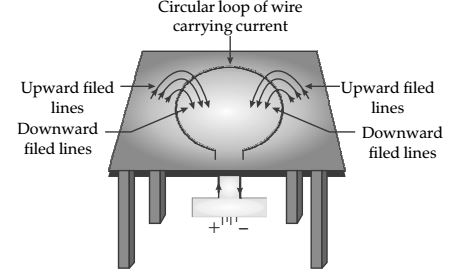
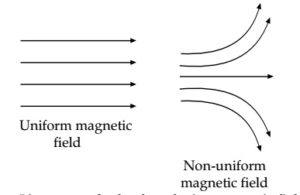
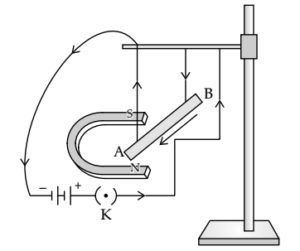
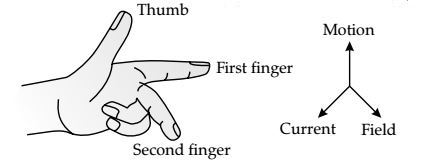
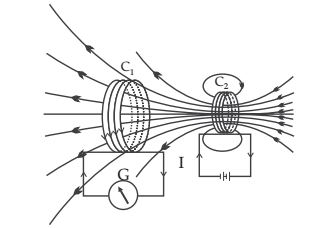
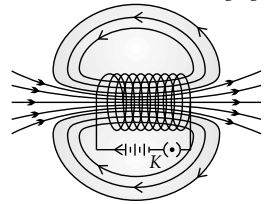
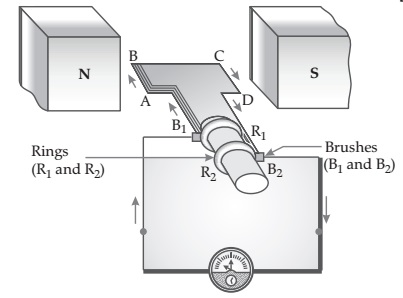
Leave a Reply